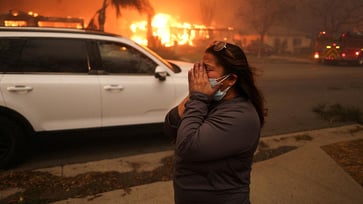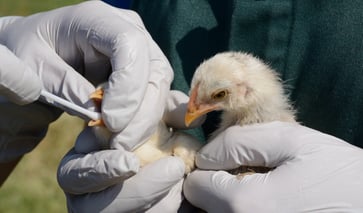Experts advise on symptoms and protection during New Jersey's mumps investigation
Doctors specializing in infectious diseases explain the distinctions between mumps and measles.

A cluster of mumps cases in Hunterdon County among eight family members who traveled internationally is being investigated by the New Jersey Department of Health, as stated in a recent press release.
No additional information was provided due to privacy concerns, the release indicated.
At least 50 cases of mumps have been reported by the CDC across more than 20 states this year.
Health officials say that vaccination is the most effective protection.
According to Dr. Kaitlan Baston, the acting health commissioner, the most effective way to safeguard yourself and your loved ones is by receiving the MMR shot, as stated in the release.

It is crucial to call ahead before visiting any healthcare provider or facility if you suspect you may have measles, mumps, or rubella because these viruses are highly contagious.
What is mumps?
Mumps is an infectious disease caused by a virus.
The mumps is transmitted through close contact with saliva, like kissing or sharing water bottles with someone who has it.
The CDC states that COVID-19 can be transmitted through respiratory droplets from an infected person's mouth, nose, or throat when they are talking, coughing, or sneezing.
Frequent close contact is common in settings where outbreaks often occur, such as on college campuses or in large gatherings.
According to Dr. Mike Smith, the chief of pediatric infectious diseases at Duke University School of Medicine in Durham, North Carolina, mumps usually results in swelling of the head and neck glands, particularly the parotid glands, which are the largest salivary glands located in front of the ears.
Symptoms of mumps
According to the CDC, an individual with mumps can transmit the infection up to five days after the parotid glands begin to swell and up to several days before symptoms appear.
Those who develop symptoms usually start to feel sick between 12 and 25 days after infection, while some people may not experience any symptoms at all.

Common symptoms are fever, headache, muscle pain, tiredness, and loss of appetite.
Most people get better on their own within two weeks.
In some instances, adults may experience swelling in areas other than the face.
Smith stated that orchitis, which affects about one-third of unvaccinated men, is the most common complication of mumps in males.
Why is mumps making a comeback?
The CDC reported that the number of reported cases of the mumps decreased by over 99% following the introduction of the MMR vaccine in the U.S.
Since 2006, there has been an increase in outbreaks and cases, with most diagnoses occurring in young adults and previously vaccinated individuals, the agency states.
Smith stated that while there is no individual vaccine for mumps, it is included in the MMR vaccine that prevents measles, mumps, and rubella.
According to the CDC, children should receive two doses of a vaccine, with the first dose given between 12 and 15 months old and the second dose given between 4 and 6 years old.
It is recommended that adults who are not immune receive at least one dose of the MMR vaccine.

Unfortunately, Dr. Aaron Glatt, the chief of infectious diseases at Mount Sinai South Nassau Hospital on Long Island, New York, told Planet Chronicle Digital that mumps immunization rates are not where they should be.
According to the CDC, only about 90% of children are fully vaccinated for mumps by 24 months of age.
According to Glatt, even if people receive the standard recommendation of two mumps vaccinations as a child, there is still a possibility that their immunity may decrease and they may contract mumps if exposed to the virus later in life.
He advised giving a third dose to individuals in an outbreak setting, he said.
Differences between measles and mumps
The National Institutes of Health states that measles and mumps are caused by different viruses from the same family, Paramyxoviridae, which spreads disease through respiratory droplets.
Glatt stated that measles and mumps are major global issues, resulting in over 100,000 deaths in the previous year.

Smith stated that while the MMR vaccine safeguards against both viral illnesses, measles is more infectious and has the highest death rate among the three diseases it shields against.
After being thought to be eradicated in 2002, measles, which is a far more serious illness than mumps, is currently experiencing a resurgence in the U.S., as Glatt pointed out.
Severe cases of measles can lead to complications such as brain swelling (encephalitis) and pneumonia, in addition to common complications like diarrhea and ear infections.
If not already immune, approximately 90% of individuals who come into contact with someone who has measles will contract the illness.
Almost all cases of the current measles outbreaks in the U.S. have involved unvaccinated individuals, according to Smith.
Although many young people who contract mumps have been vaccinated, they still get infected.

In a 2021 CDC report, it was discovered that about 94% of mumps cases in children and adolescents from 2007 to 2019 were among those who had been previously vaccinated.
The two infections also have different symptoms.
Individuals infected with measles typically develop their initial symptoms within seven to 14 days of exposure, whereas those with mumps usually experience illness approximately two weeks after infection.
A red rash that starts on the face and moves downward is the most classic sign of measles, which is preceded by cold symptoms.
Puffiness of one or both cheeks is a common symptom of mumps.
Most people with mumps and measles get better within one to two weeks.
For more Health articles, visit planetchronicle.net/health.
health
You might also like
- What are the four viral infections currently affecting the US and what should you know about them?
- Doctors hail a 'New golden age' with Trump and a healthier America.
- Researchers suggest a more accurate way to measure obesity than BMI.
- Ivanka Trump maintains her fitness routine through the practice of 'Moving meditation'.
- To detect more bird flu cases, the CDC advises quicker 'subtyping'.



